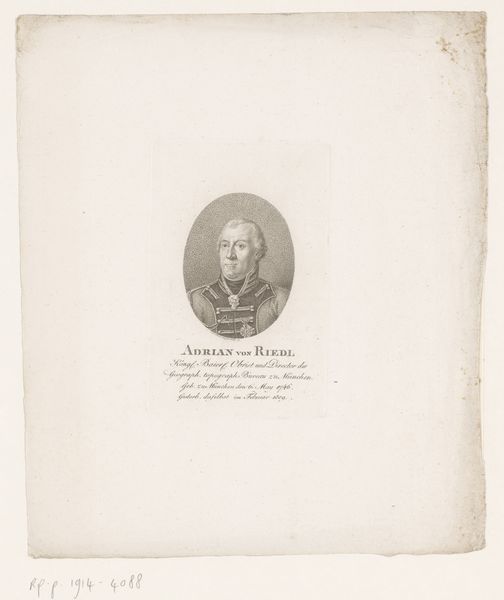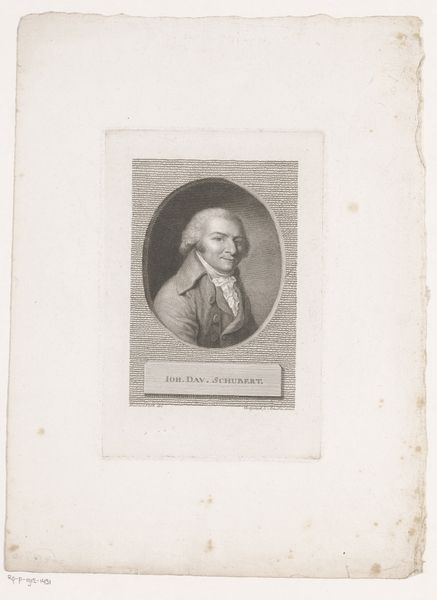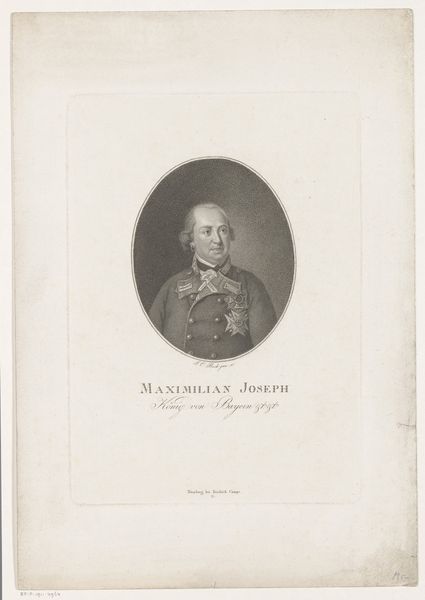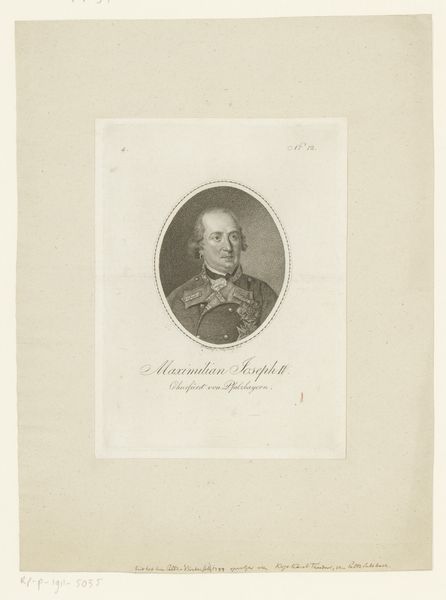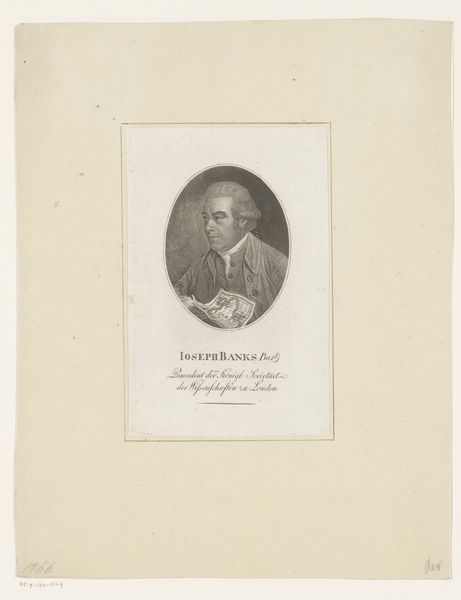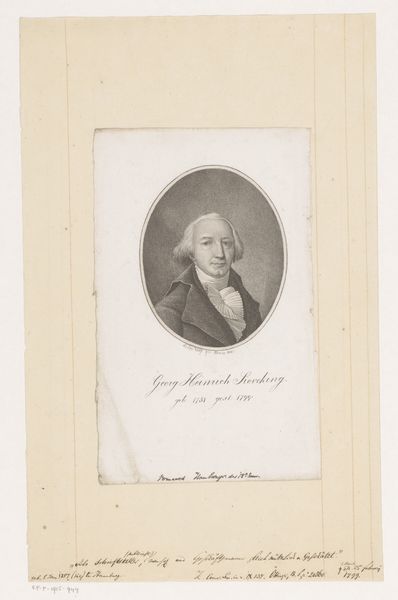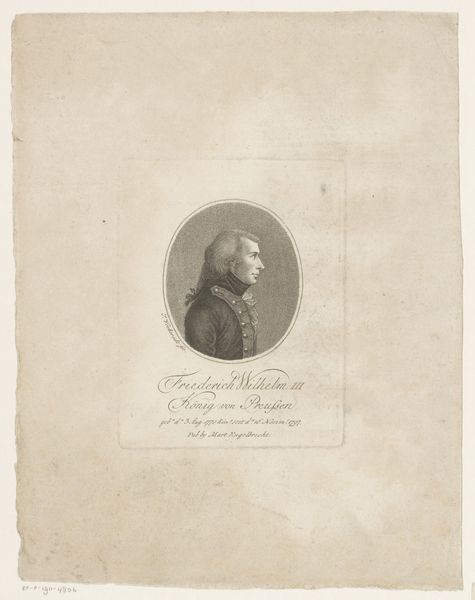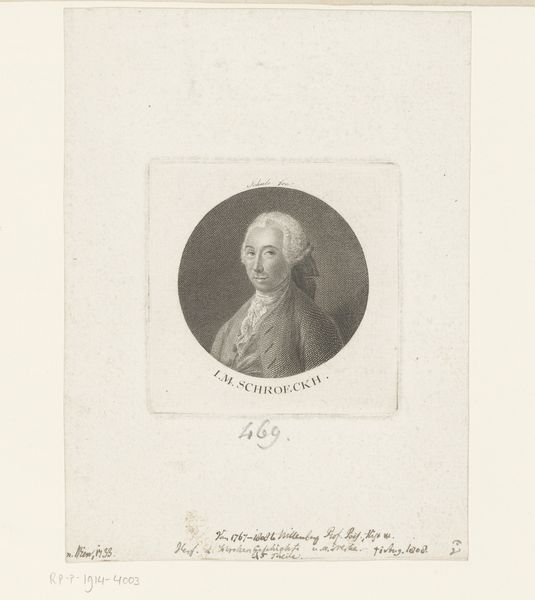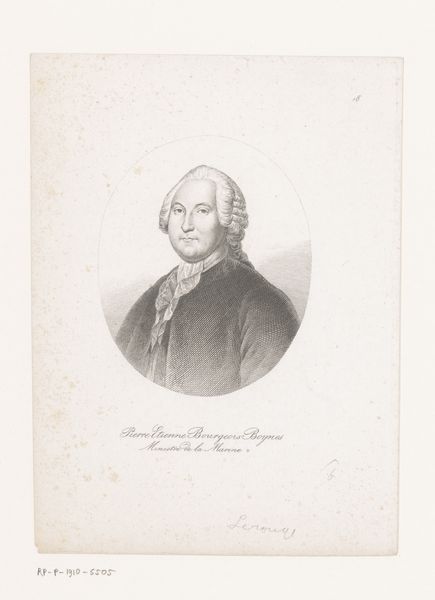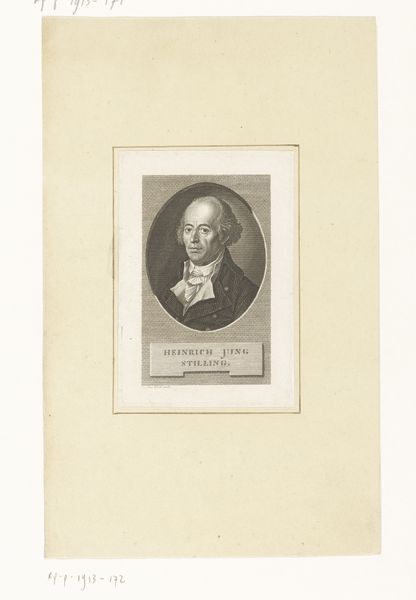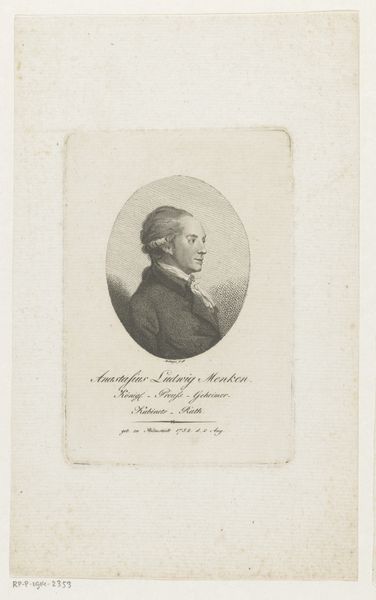
engraving
#
portrait
#
neoclacissism
#
history-painting
#
engraving
Dimensions: height 141 mm, width 94 mm
Copyright: Rijks Museum: Open Domain
Curator: Here we have an engraving titled "Portret van Maximilian I Jozef, koning van Beieren," depicting Maximilian I Joseph, King of Bavaria. It was produced sometime between 1799 and 1849 by the Monogrammist CAB. Editor: It’s striking how much the fine hatching creates a sense of texture despite the work being entirely monochrome. The engraver really mastered how to convey materiality. Curator: Absolutely. As a Neoclassical portrait, this work fits neatly into the established visual language used to convey power and legitimacy in the late 18th and early 19th centuries. Portraits such as this one helped to craft Maximilian's public image during a turbulent time. Editor: I'm intrigued by the process of engraving itself. The deliberate, repetitive actions to make an image like this. We have to consider what it means to use the labor-intensive process to render a king. What kind of symbolic power did the work derive from the way it was made? Curator: The choice of engraving also democratized the image; its reproducibility made it accessible to a wider audience, allowing for wider dissemination of the king's likeness and, consequently, his authority. The mass production and consumption of these kinds of images helped solidify public perception. Editor: Interesting, because if you focus on the objecthood of this engraving, it becomes really apparent that images have to pass through so many hands and processes. Materials must be prepped, engravings have to be carefully printed. Nothing is immediate. Curator: And speaking of immediacy, his stern expression speaks volumes about the role of the monarch in this historical moment. One must appear firm in the face of societal change. Editor: Yes, but all this production and manipulation hides in the final image, doesn’t it? It’s all so tidy, like it appeared from nowhere. I do find it hard to fully appreciate this particular rendering, though, if it hides all that activity to reinforce traditional power structures. Curator: That tension you describe really encapsulates how the king hoped to be viewed – stable and grounded – versus the reality of the social conditions. The king certainly wanted to obscure the instability beneath his rule, but this piece is, now, itself a revealing relic of this struggle. Editor: True. I came in here just looking at lines on paper, but the act of close examination pulls the veil of those aspirations away from a thing to find their conditions.
Comments
No comments
Be the first to comment and join the conversation on the ultimate creative platform.
